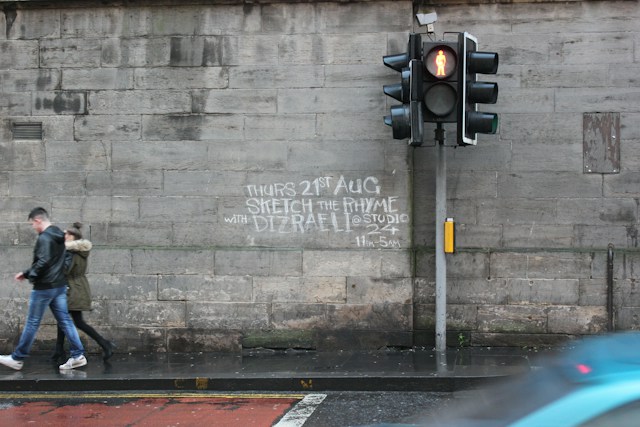Guerrilla warfare marketing, often just called guerrilla marketing, is an advertising strategy in which a company uses surprise or unconventional interactions to promote a product or service. This approach is characterized by low-cost tactics that rely heavily on creativity, high energy, and imagination. Jay Conrad Levinson popularized the term in his 1984 book “Guerrilla Advertising.” The concept draws from guerrilla warfare tactics, which use mobility and the element of surprise to combat a more significant, less mobile force.
Guerrilla marketing is designed to create a unique, engaging, and thought-provoking concept to generate buzz and turn viral. It often targets consumers in unexpected places, aiming to create a memorable experience that people will want to share with others. Examples of guerrilla marketing tactics include street art, flash mobs, pop-up events, or any other unconventional marketing ploy intended to surprise and engage consumers.
This approach can be particularly effective for small businesses or companies with limited advertising budgets because it relies more on time, energy, and imagination than big advertising spends. However, it can also be risky if the public reacts negatively, as unconventional tactics can sometimes lead to misunderstandings or backlash.
Marketing Planning Process Explained
Steps to make a guerrilla warfare marketing strategy
Creating an effective guerrilla marketing strategy involves careful planning, creativity, and understanding your target audience. Here are some steps to guide you through the process:
- Understand Your Audience
- Research: Know your audience’s preferences, behaviors, and the platforms they frequent.
- Engagement Points: Identify where your audience will most likely be receptive to unexpected marketing tactics.
- Define Clear Objectives
- Goals: Determine what you want to achieve with your guerrilla marketing campaign (brand awareness, increased sales, social media engagement, etc.).
- Measurements: Set up metrics to measure the success of your campaign.
- Brainstorm Creative Ideas
- Innovation: Think outside the box to create unique, unconventional marketing ideas that capture attention.
- Feasibility: Consider your resources and choose an impactful yet manageable idea within your budget and capabilities.
- Scout Locations and Timing
- High-Traffic Areas: Look for locations where your target audience will likely be found.
- Timing: Choose when your campaign will have the maximum impact and visibility.
- Ensure Legal Compliance
- Permits and Permissions: Check local laws and regulations to ensure your marketing activities are permitted in your chosen location.
- Ethical Considerations: Ensure your campaign is ethically sound and won’t inadvertently offend or harm your audience.
- Plan for Logistics
- Materials and Tools: Gather all necessary materials and tools required for your campaign.
- Team and Roles: Assemble a team and assign clear roles and responsibilities to manage the campaign smoothly.
- Leverage Social Media
- Online Integration: Plan how to integrate your guerrilla marketing activities with social media to amplify their reach.
- Content Strategy: Create a content plan to engage your audience before, during, and after the guerrilla marketing event.
- Execute with Precision
- Surprise Element: Maintain the element of surprise to ensure the maximum impact of your guerrilla marketing tactic.
- Flexibility: Be prepared to adapt and make quick decisions on the ground if unexpected challenges arise.
- Measure and Analyze Results
- Data Collection: Collect data based on the metrics you set in your objectives.
- Analysis: Evaluate the campaign’s success against your goals and identify areas for improvement.
- Learn and Adapt
- Feedback: Gather feedback from participants and your audience to understand their perceptions of the campaign.
- Iteration: Use the insights gained to refine future guerrilla marketing strategies.
Guerrilla warfare marketing requires creativity and a willingness to take risks. While it can offer significant rewards regarding brand visibility and engagement, it’s essential to approach it thoughtfully to ensure it aligns with your brand values and resonates positively with your target audience.
Examples of guerrilla warfare marketing strategy
Guerrilla marketing campaigns are known for their creativity, surprise factor, and unconventional approach. Here are some notable examples that have captured public attention:
- Coca-Cola’s “Happiness Machine”
- Coca-Cola installed a vending machine at a college campus that dispensed not just bottles of Coke but also unexpected surprises like flowers, pizza, and even a submarine sandwich. The reactions of surprised students were filmed and turned into a viral video, enhancing the brand’s association with happiness and sharing.
- GoldToe’s Underwear in Times Square
- GoldToe placed giant statues of men wearing nothing but briefs around New York City’s Times Square to promote its new underwear line. The unexpected sight captured the attention of passersby and generated buzz both on the streets and online.
- TNT’s “Push to Add Drama”
- To promote their new television channel in Belgium, TNT placed a big red button in a quiet square with a sign that read “Push to add drama.” When unsuspecting pedestrians pushed the button, a series of dramatic events unfolded around them, including a staged shootout and an ambulance arrival. The event was filmed, and the video went viral, showcasing TNT’s promise of drama.
- Burger King’s “Burn That Ad” Campaign in Brazil
- Burger King used augmented reality in their app to allow users in Brazil to “burn” competitors’ ads virtually. When users pointed their smartphone cameras at billboards, flyers, or coupons from other fast-food chains, the ads would appear to catch fire on the screen and reveal a Burger King ad underneath, offering the user a free Whopper. This campaign cleverly leveraged technology to engage users and directly compete with rivals.
- Frontline’s Giant Flea Installation
- To raise awareness about flea and tick prevention, Frontline created a giant floor sticker in a shopping mall depicting a dog scratching itself. From higher floors, shoppers looked like fleas on the dog, creating an impactful visual reminder of the product’s purpose.
- Red Bull’s Stratos Space Jump
- Red Bull sponsored Felix Baumgartner’s jump from the stratosphere in 2012, where he broke the sound barrier in freefall before parachuting to Earth. The event was live-streamed, and Red Bull’s branding was prominently featured, associating the brand with extreme adventure and achievement.
- The Blair Witch Project’s Viral Marketing
- Before its release, the creators of “The Blair Witch Project” used the internet to spread rumors and fake documentaries suggesting that the story was real. This early example of viral marketing created a huge buzz and made the movie one of the most successful independent films ever.
These examples showcase the diversity in guerrilla marketing tactics, from high-tech augmented reality to simple but clever visual installations. The key to their success lies in their ability to surprise and engage the public, creating memorable experiences that people want to share.











